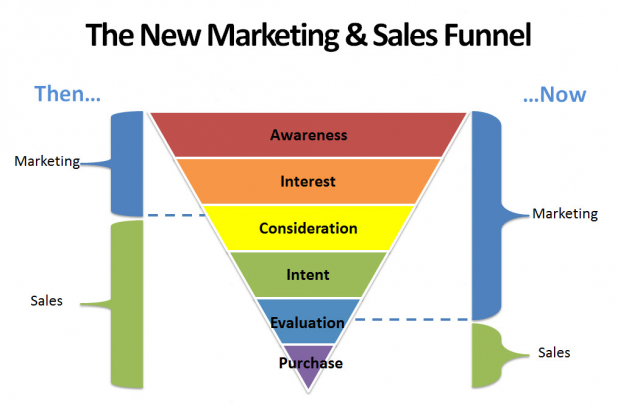While countless marketers have opined on the differences between B2C and B2B marketing, the line between the two has recently been blurred. This shift is happening, in part, because more brands serve both consumers and businesses, as when a B2C luxury bed sheet startup lands a contract with a national hotel chain. Even the companies situated squarely on one end of the B2C–B2B spectrum are destined to lose out if they fail to learn from the other side.
The companies willing to innovate—by testing and adopting new methods pioneered by B2C, B2B, and even direct-to-consumer (D2C) brands—have a huge opportunity to stand out in 2020 and beyond.
We’re All Marketing to Millennials
What’s the key reason to stop parsing out B2C and B2B strategies? Today, most businesses are marketing to millennials. Thanks to Generation Y’s size—at 83.1 million, they’re the single largest consumer group—they’ve long been the obvious target for B2C marketers.
More recently, however, millennials have started moving up professionally into management positions. In 2016, millennials became the largest segment of the US workforce, and some researchers say they will make up 75 percent of the workforce by 2025. As baby boomers retire, they are stepping into decision-making roles with spending power, and B2B companies need to adjust their marketing plans accordingly.
Here are four key strategies to help B2B and B2C companies alike navigate this new reality:
Forget the Perceived Personal–Professional Divide
A key tenet of B2B marketing used to be that it should be more logic-driven and focused on ROI at the earliest stages of the customer journey. B2C marketing, for its part, was supposed to appeal more to emotions upfront.
New B2B buyers, however, don’t distinguish between the personal and the professional like those in decades past. According to a Deloitte study, millennials are “transforming the status quo by seeking purpose in the organizations they serve without sacrificing the flexibility to be who they are at work.” Today’s leaders and managers build corporate culture explicitly around personal passion and social purpose.
With personal and professional identity more aligned than ever, B2Bs can borrow from B2C marketing—building brand awareness around mission and social responsibility to draw prospects in, then focusing on ROI at research and consideration phases.
Invest in a Digital Presence
Companies must own their message and build the type of end-to-end brand experience millennials expect when making a buying decision—even when they’re at work. CEOs need to conduct a digital audit.
An established B2B company learned this the hard way. They offer industry-making software solutions for home services providers—residential and commercial HVAC, plumbing, and electrical companies. The problem was that their go-to market strategy was built around newsletters, trade shows, and inbound marketing. They didn’t initially prioritize website design, user interface, or digital marketing efforts.
Here’s a great example of a successful marketing strategy in our modern age. A tech startup came in, saw an opportunity to disrupt their space, and started stealing customers. This company understood that new B2B buyers do their own online product research, traversing over 80 percent of the buyer’s journey by searching the web, digesting the results of digital search ads, talking to friends, and checking social media before reaching out for a demo or quote.
In this situation, B2Bs must adopt a B2C-like focused digital footprint. Bring in a digital marketing manager to understand website traffic; ensure that the company is mobile optimized; launch email prospecting, LinkedIn, and other social media programs; and implement best practices for buyers doing independent research.
Trade show marketing and newsletters aren’t enough to keep established B2B businesses competitive. This model demands digital transformation to build a consistent brand message and drive accelerated growth.
Test Experiential Marketing
B2B companies have traditionally invested more in experiential marketing, like tradeshows and conferences in the past and more recently, branded, immersive experiences. But modern experiential marketing doesn’t have to mean multimillion-dollar pop-ups. New experiential methods are available even to small-to-mid-sized B2B and B2C brands.
The secret here lies in your willingness to learn from D2C companies. The paint startup Backdrop has set out to make the consumer’s experience of painting their home better. Their brand experience extends all the way to curated Spotify playlists—perfect for painting to and released regularly on Instagram.
By testing capital-efficient experiential marketing strategies like branded playlists, then gauging how the community responds, companies can make informed decisions to go bigger with experiential programming.
Linear advertising and PR marketing are no longer sufficient for B2C companies. Modern methods—like experiential marketing—can be budget busters unless you learn from innovative D2C models.
Avoid Strategy Tourism Using Martech
The biggest mistake businesses can make in adopting new marketing methodology lies in failure to lay a foundation for measuring success. Here’s where a marketing technology stack comes in.
Tools for website tracking, email, marketing automation, CRM, and more will help you reach buyers. The preponderance of over 7,000 martech vendors today makes choosing the right toolset one of the most difficult areas for marketing leaders to navigate. It’s also a large investment, so businesses will need help putting it together if they don’t have the expertise internally. Fortunately, it’s worth it.
Investing in digital technologies will (1) make operations more efficient, boost sales, and enhance the customer experience, and (2) empower leadership to quickly assess where to make further investment.
With a new generation making most buying decisions at work and at home, the old divide between B2B and B2C no longer exists. Mom-and-pops and medium-sized B2B businesses that don’t keep up with the digital transformation will be left behind, and established consumer brands can lose ground to D2C brands using innovative methods. Owners and CEOs need to recognize that this new reality is here to stay, and they need to look beyond their own businesses to their customers and competition to stay relevant.





